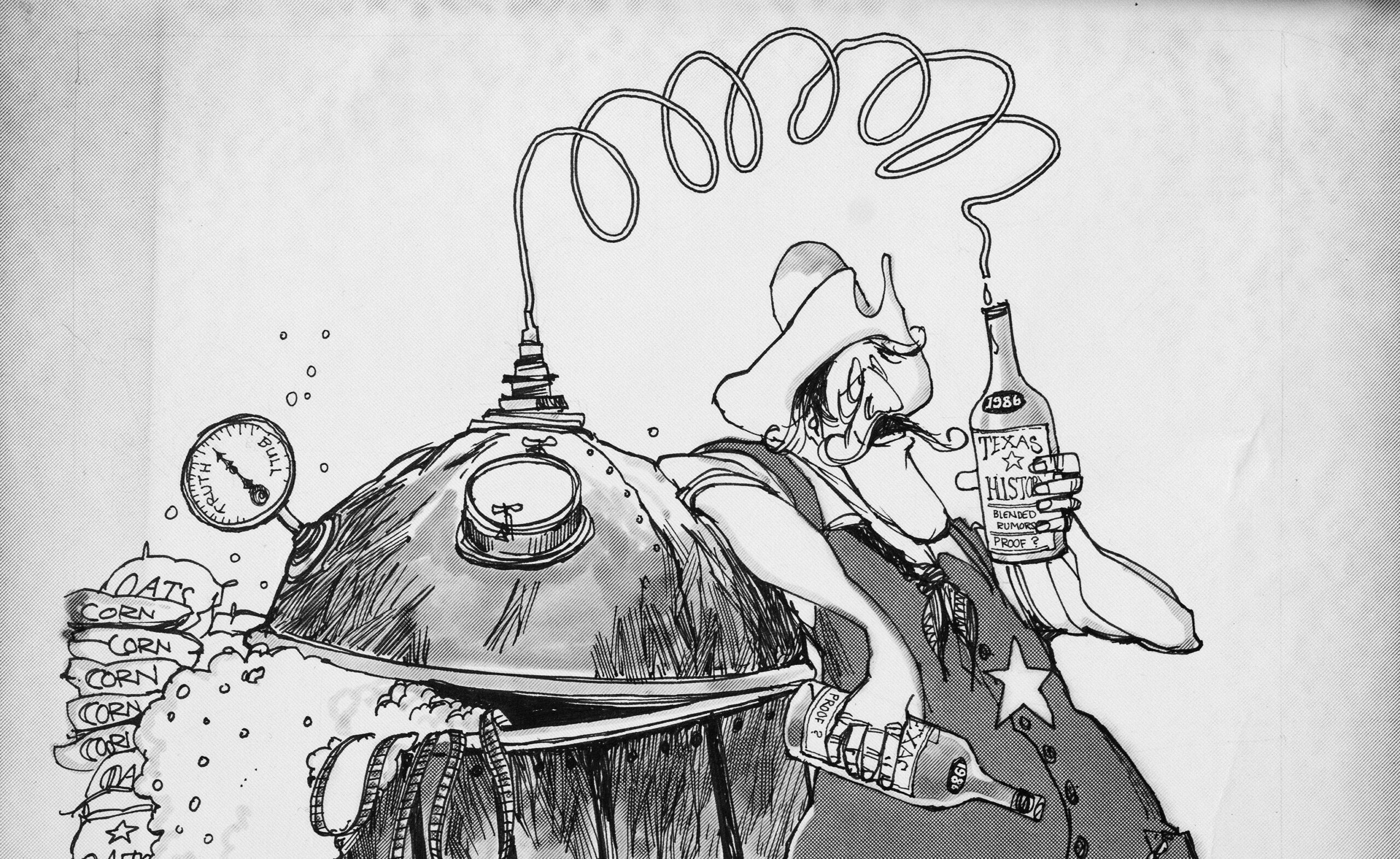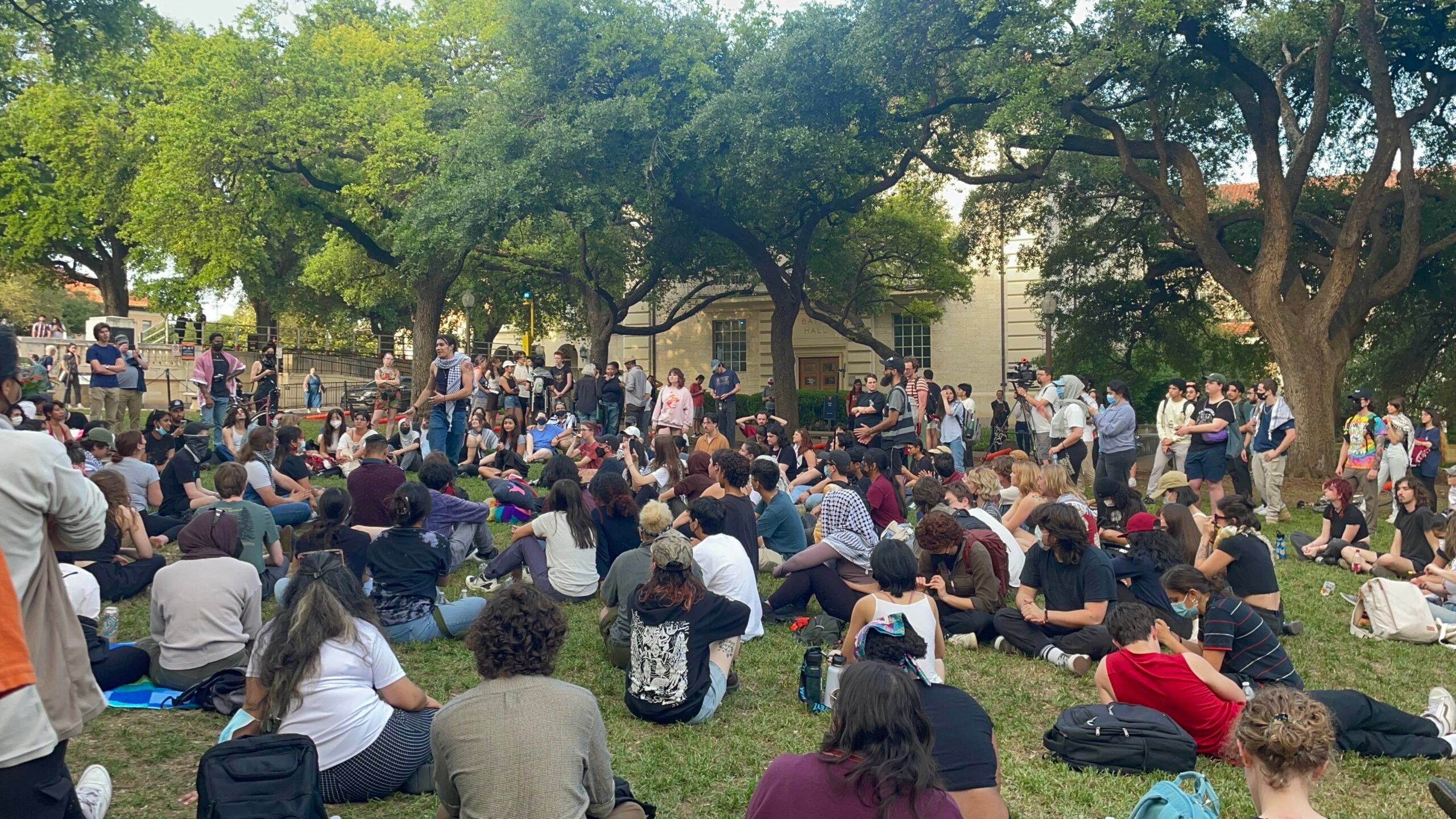Afterword
Smack Me in the Mouth If You Want To
“Coming back from assignments and private wanderings, I have seen uncountable acts of kindness, unlimited doses of hope and optimism and pure faith. I have always left those ‘little slums’ a rich man. Like someone had rammed gold into my pockets.” —Bruce Berman
Qúe miras?
In certain parts of the border you will occasionally be asked this question—especially if you look at someone the wrong way. What are you looking at?
Bruce Berman has been asked that question a few times during his photographic excursions in El Paso and Juárez. For the past 30 years Berman has been wandering and taking pictures in precisely the kind of places where the inquisitive gaze of an outsider might provoke suspicion. Like Alameda Avenue, for instance, one of Berman’s favorite haunts, not far from where he’s set up his pad and studio inside the Old Brewery building. The street is filled with Tex-Mex dives like the Nebraska Club or El Escándalo where the ranchero house band plays narco-corridos while men in cowboy boots wearing lots of gold jewelry—and an occasional handgun clipped to their belt—shoot pool. It’s not the kind of place you want to be caught staring at anyone. At least not anyone of the same sex.
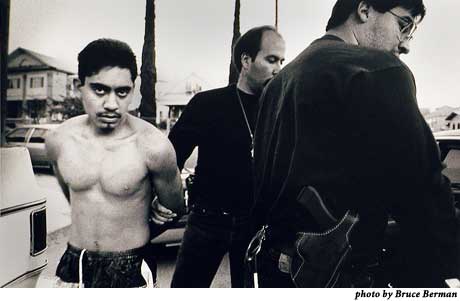
You would also expect that the pepenadores, the men, women and children who scavenge at the Juárez dump, not far from the plot of desert where bodies of murdered women have recently turned up, would want to know why a gabacho from the other side of the line is aiming his Nikon 8008 at them. Or the Segundo Barrio vato captured by Berman’s lens as he’s busted, or as they say in barrio slang, torcido, twisted by the law. You can read the question in his eyes: ¿Qué miras, güey?
Fronterizos haven’t always been wrong to distrust photographers. Photojournalists—or “parachutists” as some here call them—have a long history of dropping in from high places and taking a few marketable, often highly unflattering snapshots of the wild, wild border before they fly back home. Bruce Berman not only understands this lack of trust but has suffered some of its consequences ever since he started freelancing for Chicago newspapers in the ’60s. He’s been chased, punched, and shot at while taking pictures of underworld figures. In 1969 he had his nose broken when someone shoved Berman’s first Ansco Memar camera against his face when he was photographing a riot between the Chicago police and the Weathermen.
He tries to explain why he keeps returning to the streets and shooting complete strangers despite the risks involved. “They have lots of reasons to mistrust me,” he says. “Maybe they think my camera is a weapon, but it’s not. It’s a tool of education. If I didn’t have a camera, I would be ignorant. When
I first came to the border I would shoot people passing by from a distance. Probably because I felt I was an outsider. I would try to make myself as invisible as possible. I was kind of a chameleon. But now that this place is starting to become my home, I have to look people in the eye. I have to know who they are. It’s about the direct gaze. Smack me in the mouth if you want to, but I want us to look at each other. It’s about engagement.”
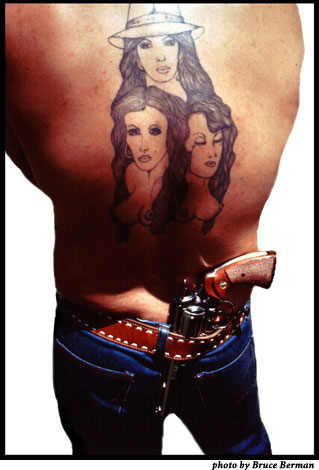
Critics have praised Berman’s work for its “use of saturated colors, silhouettes, slick surfaces, foreshortened subjects and complex juxtapositions of positive and negative space.” He shrugs off this contemporary art jargon as mostly just a lot of “foo-foo.” He admits that color is a central element in a series of chromogenic prints that he’s done, including “Vaquero with Cigarette: 1985” and “Nebraska: 2005,” which depict the exuberant hues of some of the buildings on Alameda. But he’s looking for much more than an aesthetic effect.
I wanted to document the continuity here, the history. I wanted to show that there’s zones where walls are still painted by hand with these bright colors today just as they were more than 20 years ago. In most streets now they don’t have hand-applied paint anymore. Some people from north of the freeway might think these colors are “too much” or even “over the top.” But that’s why I live in this neighborhood—the exuberance. I don’t feel comfortable anywhere else.
Berman arrived in El Paso in 1975 when he was offered a job teaching photography at UTEP’s journalism department. He no longer teaches there, but he’s still in the city.
I’ve often asked myself why I’m still here. My wife at the time wanted us to go back East. But when I found this empty, run-down loft at the Old Brewery, something told me I had to stay here. I don’t know, maybe that contributed to our divorce. But I decided my stand in life had to be made on Alameda. And I didn’t flake out. I stayed on it. I needed to do something consistently. There’s nothing else I’ve been doing consistently in my life except this project.
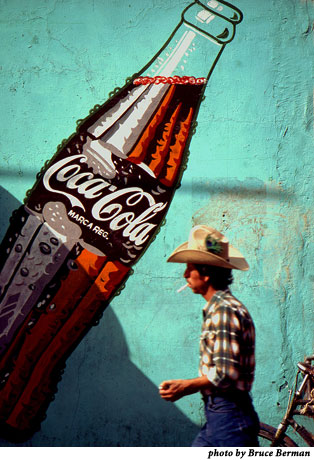
The result of this three-decade-long project is thousands of photographs hung up on the walls, stored in drawers, pinned up on poster boards, saved in his computer files and strewn everywhere in Berman’s apartment studio. There’s not much except photography in Berman’s home; the place is almost monastic. So maybe it’s not that surprising that he takes most of his photos on his knees. Berman says that he prefers shooting from a low angle looking up. Picture-taking, for some, is a form of prayer.
Berman confesses that he’s always been attracted to those who see shooting as a mission. His friend and mentor Roy Morsch, whom he gigged with in Manhattan in the ’70s, taught him “to carry the camera like a ball and chain.” Berman was also “completely taken with the mission” of the FSA (Farm Security Administration) photographers of the 1930s, especially Dorothea Lange, Walker Evans, Marion Post Walcott, and Russell Lee. He has no problems describing his own work as politically engaged. “I’m a Socialist,” he says.
When Dorothea Lange came to the border in the 1930s (her images of El Paso during the Depression are now archived at the Library of Congress) the denizens of the border she photographed were pretty much the same people Bruce Berman has been shooting since the ’70s—Mexican women crossing the bridge, migrant workers, residents of the shanty towns, los de abajo. The underdogs. But whereas Lange focused mostly on poverty and destitution, Berman sees something else.
I don’t see poverty. I see dignity, optimism, dreams. I spent a summer once documenting the lives of a family who had just recently emigrated from southern Mexico, who lived in a small shanty in Colonia Felipe Angeles, Barrio Anapra [in Juárez]. Señor Nieves, the patriarch of the family told me something that completely changed the way I looked at things: “Never did I think I could have all this.” And I realized then that it wasn’t about me imposing my vision. Who was I to comment on his view of success? That’s when I went from wanting to be an artist to just wanting to be a photographer. It’s not about expressing myself. It’s about using my skills to tell other people’s stories.
He doesn’t always need to walk far to tell these stories. He went only a couple of blocks down from his studio to take the picture of Fred Torres playing his ukulele in the same Alameda home where he was born 76 years before. Alameda was also where he snapped a photo of a man who makes his living by shocking people with electric cables and where, for years, Berman noticed a guy passing by almost every day invariably dressed in soccer shorts and holding a basketball that he never dribbled. One day, when the young man passed by carrying a hawk that he found under the Spaghetti Bowl, the circular loop of I-10 underpasses and overpasses near Berman’s neighborhood, he took his picture.
The kind of street photography he does puts Berman more in the continuum of Weegee or Diane Arbus and their funky urbanism than with the austere vision of the social documentarians. His trajectory also resembles that of Harry Blumenthal, who came to El Paso from Philadelphia in 1910 at the age of 24, was offered a short stint in a local newspaper and ended up taking thousands of strange and somewhat surreal photographs of the border city’s street life—funeral wakes, automobile accidents, bar scenes, people missing limbs, men in drag—for almost five decades. Then there was Otis Aultman, another commercial and press photographer originally from the East, whose images of El Paso and Juárez during the Mexican Revolution have become an integral part of the fronterizo iconography.
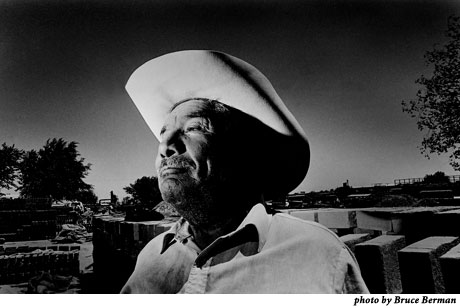
If there’s a phrase that best describes Berman, however, it’s “on the edge”—like the border itself. That’s what first brought him to El Paso at the age of 29—angst, restlessness, manic energy, the need to breathe, to escape. And that’s what is increasingly pushing Berman away from El Paso today. He’s afraid that El Paso and Juárez are beginning to lose their edge. The zones with the hand-painted walls are shrinking.
These downtown development district plans—”the grid”—are going to take over. Even in Juárez. You go down a couple of miles south and now there are these expressways with nothing but strip malls along them. They’re even tearing down the Bull Ring, La Plaza Monumental, and replacing it, according to rumors, with a Wal-Mart. The Plaza Monumental was always one of those visuals that told you, “You ain’t in Kansas anymore, Dorothy.” Isn’t that the ultimate sign that the so-called border is disappearing?
Even something like El Día de Los Muertos…I used to go down to the Juárez cemetery every November 2nd. Now even the Day of the Dead has become marketed. People sell flowers and cotton candy to the tourists. There are still some great colors there. But for the most part they’ve ruined the Day of the Dead and they’ve done it for money.
“Maybe it’s time for me to go,” he says. “Now that I’m older, that my hair isn’t black anymore, I’ve become an outsider again. It’s become harder to gain people’s trust when I shoot out in the street. I’m an outsider not because of ethnicity or geography, but because of age. Then again everyone here is an outsider. You’re an outsider too,” he tells me. “Maybe there are other places where they need a photographer. I’m thinking that my border project is almost done. I don’t know where I need to go. I’m thinking south. Then again, 20 years ago I was saying the same thing and I’m still here.”
I ask Berman one last question. A very basic one. My own variation of a question he’s been asked many times before.
“What are you looking for?” I ask.
Berman takes a while to answer.
“I just want somebody to take me home,” he responds. “That’s all. When somebody takes me home, when I become part of the picture and the people in it, I’ll be done.”
David Romo is the author of Ringside Seat to a Revolution: An Underground Cultural History of El Paso and Juárez: 1893-1925 (Cinco Puntos Press). The exhibit “Bruce Berman: Border Document, 1985-2005” can be seen at the Rubin Center for the Visual Arts, at the University of Texas-El Paso through April 1.
